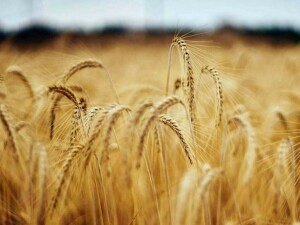Rafhan Maize Products Co. Ltd.
Introduction
Pakistan’s leading corn refinery, Rafhan Maize Products Company Limited (PSX: RMPL) is the premier provider of corn-based products and ingredients in Pakistan. The company has a market cap close to Rs92 billion.
Rafhan Maize is an affiliate of Ingredion Incorporated, a US-based corn-refiner with commercial and manufacturing operations in more than sixty countries. It has three manufacturing locations in Pakistan: Rakh Canal plant, Faisalabad (Punjab), and Cornwala plant, Jaranwala (Punjab), and Mehran Plant, Kotri, Jamshoro (Sindh).
The company processes hundred thousand tons of maize each year to produce food and industrial products Installed grinding capacity nearly stands at 1,900 metric tons per day (calculated using 350 working days per annum), with average utilization level close to 90 percent over last decade.

Although it falls under the category of food producer, Rafhan Maize produces a variety of starches and sweeteners that have applications in over 60 different types of industries, including textile, confectionery and bakery, paper and corrugation, food and beverages, pharmaceutical and chemical, poultry, livestock, aquaculture, and edible oils. These products use maize as basic raw material and are used to produce industrial starches, liquid glucose, dextrose, dextrin, and gluten meals.
The Cornwala plant in Jaranwala accounts for over 40 percent installed capacity of the company. The plant has four main divisions, including wet milling, dry starch, dextrose, and sweetener division. The wet milling division separates corn into its components starch, protein, germ and fiber. Corn oil is extracted from corn gern; starch is fed to other divisions to render industrial products; protein is dried to prepare poultry feed; while fibre is dried to make cattle feed.

The dry starch division prepares a variety of starch types with a broad range of applications from food industry to textile, paper and corrugation, and pharmaceuticals.
The sweetener division produces variety of corn syrups and sugar substitute sweeteners derived from corn starch used in commercial and industrial production. These have a variety of applications such as sweetening, texture, color used in food, beverage, pharma-, and confectionary preparations. It has two major production lines: acid hydrolyzed glucose and enzyme hydrolyzed glucose.
The dextrose division produces dextrose monohydrates which are used as instant energy booster for preparations such as oral re-hydration salts etc. The Cornwala plant also has 12 megawatt cogen power generation facility.
Shareholding Pattern
As of December 31, 2021, over 71 percent of shares are owned by the foreign principal/parent company: Ingredion Incorporated. The local general public owns about 20 percent shares, while board members and their dependants own about 6.5 percent shares. The remainder 2.5 percent shares rests with banks, DFIs, and insurance companies.

Ingredion Incorporated (formerly Corn Products International, Inc) is an ingredient provider based in Westchester, state of Illinois. The company processes corn, tapioca, potatoes, and other vegetables and fruits into ingredients for the food, beverage, brewing, and pharmaceutical industries and numerous industrial sectors. It has more than 11,000 employees around the world in 44 locations, and customers in more than 60 markets. In 2018, net sales were $5.8 billion. The subsidiary in Pakistan contributes less than three percent to revenue on average of the global giant.
Recent Performance
During the five-year period between CY16 and CY21, RMPL’s topline grew at CAGR of 11 percent. Topline grew from a little over Rs25 billion in CY16 to Rs42.6 billion by CY21 end. Profitability indication weren’t very far behind either, with both gross profit and before-tax profits growing robustly at 8.2 and 9.4 percent 5-year CAGR, respectively.

But this robust performance masks the underlying weakness of the local currency, which has added little gains to foreign principal’s fortunes. In US dollar terms – home currency to parent Ingredion Incorporated –topline peaked in CY17 with $247 million in revenue, declining year on year for next three periods. Topline finally begin to grow in the last year CY21, recovering to $262 million, denoting a 5-year CAGR of just 1.6 percent.

Profitability indicators performed even more poorly in dollar terms during the period under review. Both gross and before-tax profits are yet to catch up to their CY17 peak figure of $70.5 million and $57.5 million, respectively. After declining for three straight years, profitability finally stabilized during the latest full year CY21; partly recovering to $63.5 million in gross profits and $55 million in before-tax profits, respectively.

This erosion is reflective in company’s weak volumetric performance. Plant utilization is down 8 percentage points since its peak utilization level of 93 percent, with no significant capacity addition since at least CY16, when company raised its grinding capacity by 15 percent.
Total volume of maize processed also peaked by CY19, when actual production reached 0.6 million metric tons for the first time in history. Since then, production has fallen by 7 percent to just 0.56 million metric tons. This is despite Pakistan producing ever-larger corn crop each year, with corn production breaching 10.6 million metric tons in 2021-2022 fiscal year.
Outlook
Despite being a pioneer in local corn processing industry, it appears that Rafhan’s market share is becoming smaller each year, as the company faces tougher competition for raw material procurement from poultry and animal feed processing industries. Meanwhile, cost escalation means the management is now even more focused on improving efficiencies and keeping a lid on overheads, rather than gaining more market share. However, gross margin still fell by 5 percentage points since hitting peak level of 29 percent several years ago. Going forward, currency depreciation in the ongoing calendar year hints at a bleak outlook for company’s profitability during CY-22 as company struggles to maintain profitability in an ever tougher environment with growing competition.
























Comments
Comments are closed.